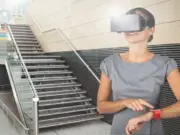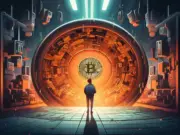Learning new things has been around since the dawn of time, as have games. When they come together, they create something very powerful and life-changing in many ways. When you give an award to a child who may not have enjoyed studying as a concept, he becomes intrinsically motivated. Remember when you were in kindergarten, and your teacher used to give you a star for something awesome you accomplished? Teachers used to frequently play a quiz after the chapter ended or right before the exam in traditional school settings. This is always a hit with kids because it gets them excited and engaged while also revising the subject all at once. Games have the ability to quickly stimulate your brain and get your creative juices flowing. It also encourages healthy competition, which keeps children interested at any age. Both of these examples, after all, are gamification in education. Using elements from games in a classroom setup. With the advancement of technology, stars from bygone eras and class quizzes have been transformed into badges that children can earn at various online gaming quiz leagues.
According to industry experts, the CAGR from 2018 to 2023 will be 32%. With the pandemic that occurred, gamification in education crossed the line from a luxury to a necessity. With schools being completely online, the best way for any teacher to keep the children interested and captivated was to devise a game that did not make learning virtually tedious.
Classrooms can be gamified to ensure a student’s interest and maximise their overall performance. Gamification in the classroom can be done in the following ways-
- The power of storytelling-
Humans, in addition to being called homo-sapiens, are also known as homo narrans because you are hard-wired in a story perspective, which means that anything in the world that appears and sounds complicated to a human being can become easy to comprehend and retain if presented as a story. As a result, teachers can harness the power of storytelling in the classroom. They can even divide students into teams at the end and create an online quiz to put their story into action. This will help you remember minor details of plays in literature and important war dates in history.
- Level up-
A multi-level game can pique the interest and excitement of anyone, not just children, in ten seconds. People will start scrambling around the room, forming groups and deciding on the next steps. As a result, the design element of levelling up in games when introduced in a classroom can foster competitiveness among children, causing them to push themselves and want to and not have to strive to do better.
- The progress that feels personal-
When you introduce a level system into the learning process, children do not initially compare their performance to their peers; instead, they see how far they have progressed in comparison to the previous level. At each level, there could be suggestions and ways to level up, such as spending an extra fifteen minutes revising the concepts and then retaking the test. This is especially useful for students who feel overly pressured by their grades and who may do well but suffer from performance anxiety. When children are not defined by numbers but by levels of progression, they truly blossom. They start holding themselves accountable.
Gamification in the classroom is a true blessing. According to analysts, GenZ spends more than eight hours per day online. So, rather than waiting for them to fit into the traditional educational system, modernising it for them is the way to go. Games will always have an evergreen appeal and work best as ice-breakers, reviving an unimpressed crowd of students and instilling a sense of responsibility in their learning. Mendeleev, who invented the periodic table, was inspired by playing cards, which he did on a regular basis. He was a weak student who invented the periodic table over a hundred years ago. As a result, all students thrive in the gaming environment. After all, it is gaming that will revolutionise learning. Students begin to be interested in learning because they finally study rather than cram and do it for the sake of learning new things rather than for grades. Gamification has the potential to repair the educational system.













































